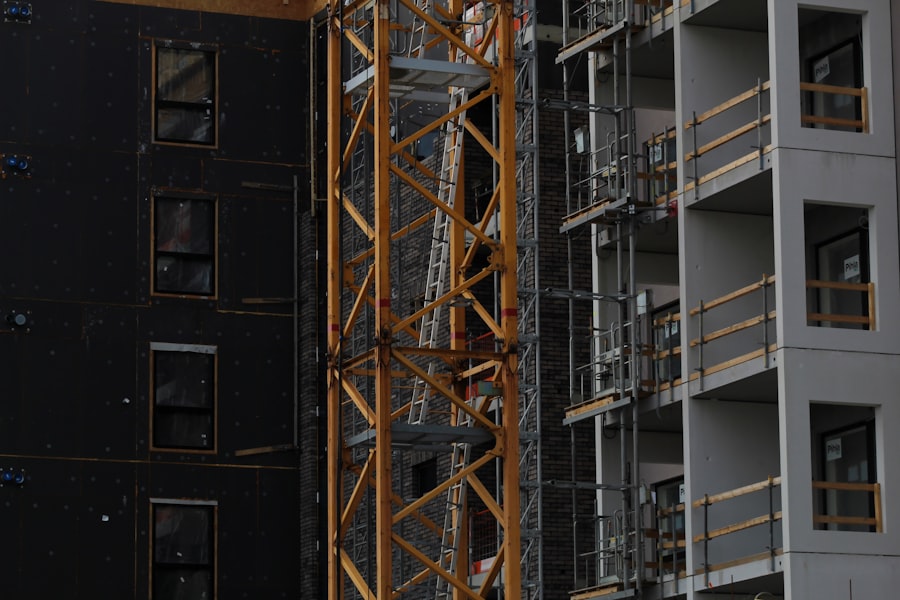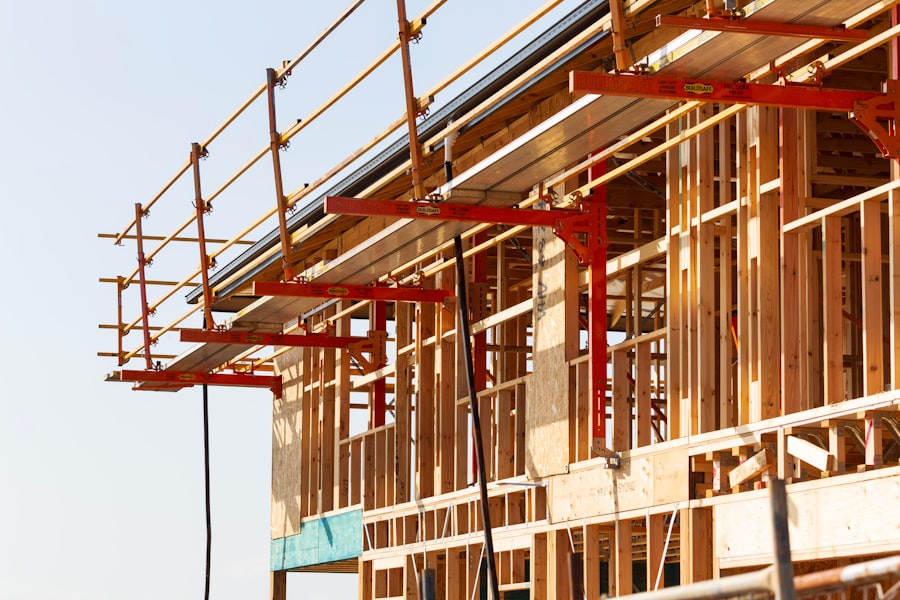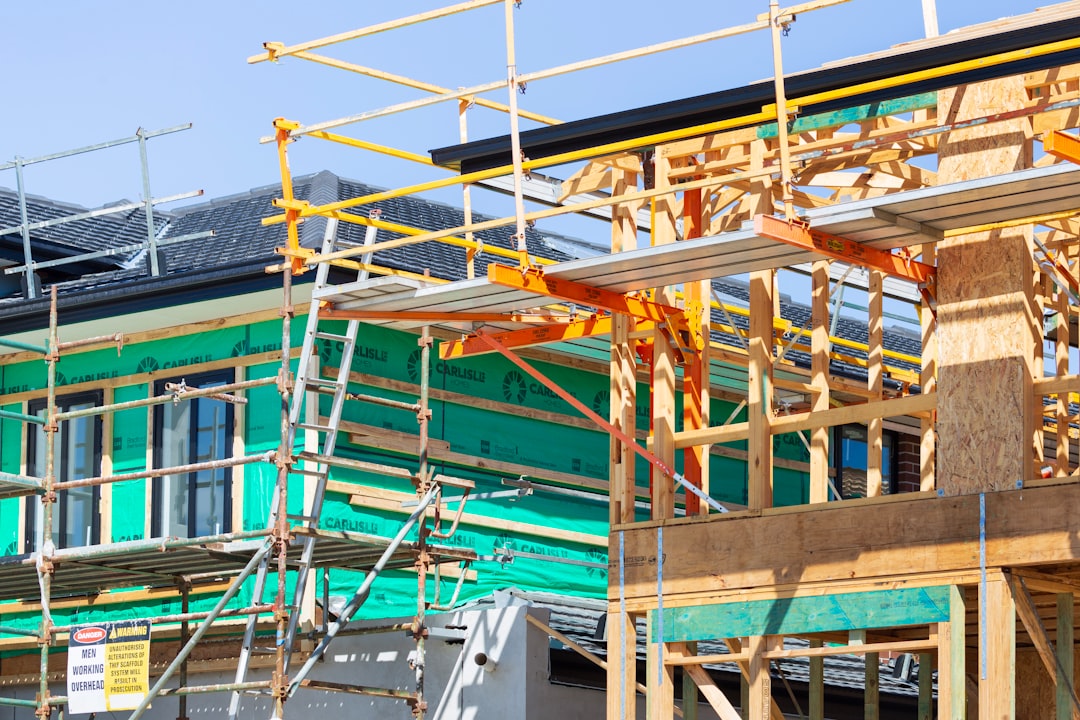The construction industry has long been a cornerstone of economic development, but it is also fraught with challenges, particularly when it comes to ensuring the safety and longevity of structures. As technology continues to evolve, the integration of artificial intelligence (AI) into various sectors has opened new avenues for enhancing efficiency and safety.
KI, or Künstliche Intelligenz, refers to the use of AI technologies to analyze data and make informed decisions. In the context of construction, KI-based damage detection systems are designed to identify potential structural issues before they escalate into serious problems. The adoption of KI in damage detection not only streamlines the inspection process but also significantly reduces the risk of human error.
Traditional methods of assessing structural integrity often rely on manual inspections, which can be time-consuming and subjective. By leveraging advanced algorithms and machine learning techniques, KI systems can analyze vast amounts of data from various sources, including sensors, drones, and imaging technologies. This innovative approach not only enhances the accuracy of damage detection but also allows for real-time monitoring of construction sites, ensuring that any potential issues are addressed promptly.
Key Takeaways
- KI-based damage detection in construction uses artificial intelligence to analyze and detect potential structural damages or defects in buildings and infrastructure.
- KI systems can automatically inspect construction sites and identify potential hazards, allowing for early detection of structural defects.
- The applications of KI-based damage detection in construction include automatic inspection of buildings, which can improve safety and efficiency in the industry.
- Early detection of structural defects through KI systems can prevent potential hazards and ensure the safety and stability of buildings and infrastructure.
- Using KI systems in the construction industry offers advantages such as improved accuracy, efficiency, and cost-effectiveness in damage detection and prevention.
How KI systems can analyze construction sites and detect potential structural damages or defects
KI systems utilize a combination of data collection methods and analytical techniques to assess the condition of construction sites. These systems can integrate data from various sources, such as Building Information Modeling (BIM), Geographic Information Systems (GIS), and Internet of Things (IoT) devices. By aggregating this information, KI can create a comprehensive digital twin of a construction site, allowing for detailed analysis and monitoring.
One of the key advantages of KI-based systems is their ability to process visual data through computer vision technologies. Drones equipped with high-resolution cameras can capture images and videos of construction sites from multiple angles. These images are then analyzed by KI algorithms that can detect anomalies, such as cracks, deformations, or other signs of wear and tear.
By comparing current data with historical records, these systems can identify patterns that may indicate potential structural defects, enabling proactive maintenance and repairs.
Applications: automatic inspection of buildings

The application of KI in automatic building inspections is revolutionizing how construction professionals approach safety and maintenance. Traditional inspection methods often involve labor-intensive processes that require skilled personnel to manually assess structures for signs of damage. In contrast, KI-driven inspections can be conducted more efficiently and frequently, providing a continuous overview of a building’s condition.
For instance, some companies are now employing robotic systems equipped with advanced sensors and imaging technology to perform inspections autonomously. These robots can navigate complex environments, capturing data that is then analyzed by KI algorithms to identify any structural concerns. This not only reduces the burden on human inspectors but also allows for inspections to be conducted in hazardous or hard-to-reach areas without compromising safety.
Early detection of structural defects
One of the most significant benefits of KI-based damage detection is its ability to facilitate early detection of structural defects. By continuously monitoring construction sites and analyzing data in real-time, these systems can identify issues before they become critical. Early detection is crucial in preventing costly repairs and ensuring the safety of occupants.
For example, a KI system might detect subtle changes in a building’s foundation or shifts in load-bearing walls that could indicate potential failure points. By alerting construction managers to these issues at an early stage, they can take corrective action before the situation worsens. This proactive approach not only enhances safety but also contributes to more efficient resource allocation and project management.
Prevention of potential hazards through KI-based damage detection
The integration of KI in damage detection plays a vital role in preventing potential hazards associated with structural failures. By identifying weaknesses in a building’s design or construction early on, stakeholders can implement necessary interventions to mitigate risks. This is particularly important in high-stakes environments such as hospitals, schools, and residential buildings where safety is paramount.
Moreover, KI systems can analyze environmental factors that may contribute to structural degradation over time. For instance, they can monitor weather patterns, soil conditions, and seismic activity to assess how these elements might impact a building’s integrity. By understanding these external influences, construction professionals can design structures that are more resilient to potential hazards, ultimately leading to safer living and working environments.
Advantages of using KI systems in the construction industry

The advantages of employing KI systems for damage detection in the construction industry are manifold.
By minimizing human error and bias, KI provides a more objective assessment of a building’s condition.
Additionally, the efficiency gained through automation cannot be overstated. Traditional inspection methods often require significant time and labor resources, whereas KI-driven solutions can conduct assessments rapidly and with minimal human intervention. This not only saves time but also reduces costs associated with labor and project delays.
Furthermore, the ability to analyze large datasets allows for more informed decision-making. Construction managers can leverage insights generated by KI systems to prioritize maintenance tasks based on urgency and severity, ultimately leading to better resource management.
Challenges and limitations of KI-based damage detection in construction
Despite the numerous benefits associated with KI-based damage detection, there are challenges and limitations that must be addressed for widespread adoption. One significant hurdle is the initial investment required for implementing these advanced technologies. The cost of acquiring sophisticated sensors, drones, and software can be prohibitive for smaller construction firms.
Moreover, there is a need for skilled personnel who can interpret the data generated by KI systems effectively. While these technologies can automate many processes, human expertise is still essential for making informed decisions based on the insights provided by AI algorithms. Another challenge lies in data privacy and security concerns.
As construction sites increasingly rely on interconnected devices and cloud-based solutions, safeguarding sensitive information becomes paramount. Ensuring that data is protected from cyber threats while still being accessible for analysis is a delicate balance that must be maintained.
Future prospects and developments in KI-based damage detection in the construction industry
Looking ahead, the future prospects for KI-based damage detection in the construction industry are promising. As technology continues to advance, we can expect even more sophisticated algorithms capable of analyzing complex datasets with greater accuracy. The integration of machine learning will enable these systems to learn from past inspections and improve their predictive capabilities over time.
Additionally, as the Internet of Things (IoT) expands within the construction sector, we will see an increase in real-time monitoring capabilities. Sensors embedded within structures will provide continuous feedback on their condition, allowing for immediate responses to any detected anomalies. Collaboration between technology providers and construction firms will also play a crucial role in shaping the future landscape of damage detection.
By working together to develop tailored solutions that address specific industry needs, stakeholders can drive innovation and enhance safety standards across the board. In conclusion, KI-based damage detection represents a transformative shift in how the construction industry approaches safety and maintenance. By harnessing the power of AI technologies, stakeholders can ensure that structures remain safe and sound while optimizing resources and reducing costs.
As we move forward into an era defined by technological advancement, the potential for KI in construction is boundless, paving the way for safer buildings and smarter cities.
Leider scheint keiner der angegebenen Links direkt mit dem Thema KI-basierte Schadenserkennung in der Bauindustrie zusammenzuhängen. Die Links beziehen sich hauptsächlich auf das Metaversum und dessen Anwendungen oder theoretische Diskussionen über dessen Zukunft. Für spezifischere Informationen zur KI in der Bauindustrie wäre es ratsam, nach Artikeln zu suchen, die sich direkt mit Technologien befassen, die auf Baustellen für die Inspektion und Schadenserkennung eingesetzt werden.
FAQs
What is KI-basierte Schadenserkennung in der Bauindustrie?
KI-basierte Schadenserkennung in der Bauindustrie refers to the use of artificial intelligence (KI) systems to analyze construction sites and identify potential structural damages or deficiencies. This technology can be used for automatic inspection of buildings, early detection of structural defects, and proactive maintenance planning.
How do KI systems analyze construction sites?
KI systems analyze construction sites by processing data from various sources such as sensors, cameras, and drones. They use machine learning algorithms to identify patterns and anomalies that may indicate potential structural damages or deficiencies.
What are the applications of KI-basierte Schadenserkennung in der Bauindustrie?
The applications of KI-basierte Schadenserkennung in der Bauindustrie include automatic inspection of buildings, early detection of structural defects, proactive maintenance planning, and improved safety and quality control on construction sites.
What are the benefits of using KI systems for damage detection in the construction industry?
Using KI systems for damage detection in the construction industry can lead to improved safety, reduced maintenance costs, proactive identification of potential issues, and enhanced overall quality control. It can also help in preventing catastrophic failures and accidents.
Are there any limitations or challenges associated with KI-basierte Schadenserkennung in der Bauindustrie?
Some limitations and challenges associated with KI-basierte Schadenserkennung in der Bauindustrie include the need for high-quality data for training the machine learning algorithms, potential privacy concerns related to data collection, and the initial investment required for implementing KI systems. Additionally, the technology may not be able to detect all types of structural damages or deficiencies.











Leave a Reply